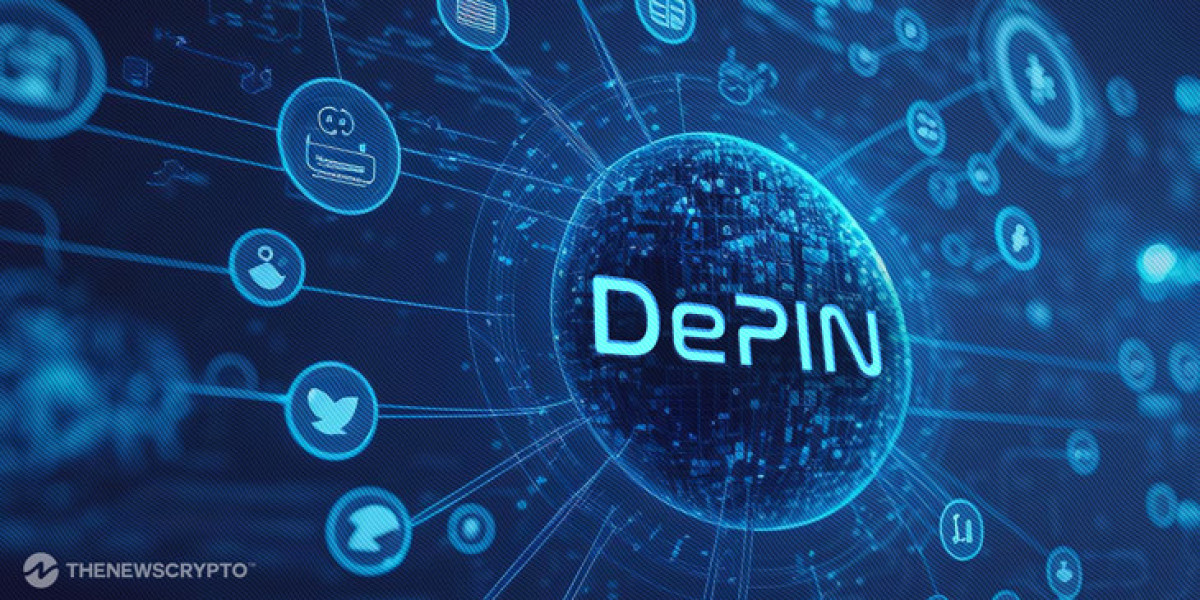DePIN, or Decentralized Physical Infrastructure Networks, refers to a growing trend within the Web3 space where physical assets or infrastructure are managed, owned, and operated in a decentralized manner. Unlike traditional centralized models where companies or governments own and control physical infrastructure (such as servers, transportation networks, or data centers), DePIN allows individuals, businesses, and communities to collectively manage and profit from these physical assets using blockchain and decentralized technologies.
DePIN systems use smart contracts, tokenization, and decentralized governance models to enable the shared use and monetization of real-world infrastructure. This approach opens up new possibilities for resource sharing, monetization, and creating decentralized business models that would have been difficult to achieve in a centralized system.
Key Features of DePIN
Tokenization of Physical Assets:
- DePIN involves the creation of tokens that represent ownership or a share of physical assets. These tokens can be traded or staked on blockchain networks, giving users the opportunity to invest in physical infrastructure without needing to own it outright.
- Examples could include tokens representing access to computing resources, storage space, or energy.
Decentralized Ownership:
- Rather than a single entity controlling the infrastructure, DePIN models distribute control across a network of participants. This decentralization is governed by smart contracts, ensuring transparent and automated management of physical resources.
- For example, a decentralized network of IoT devices or data centers could be collectively owned by token holders, with each participant receiving rewards based on their contribution or stake.
Incentive Mechanisms:
- Participants in DePIN ecosystems are incentivized to share their resources, such as bandwidth, storage, computing power, or energy. This is often achieved through reward mechanisms tied to the amount of resource shared and the level of contribution to the network.
- For example, a network of decentralized data storage providers might reward participants with tokens for sharing unused storage space.
Interoperability:
- DePIN platforms often emphasize interoperability with other Web3 projects. By using standardized protocols and blockchain networks, participants can engage in cross-platform transactions, access decentralized applications (dApps), and utilize shared resources in various ways.
Smart Contracts and Automation:
- Smart contracts are used to automate key functions within DePIN ecosystems. These self-executing contracts can handle everything from resource allocation and payment distribution to governance and decision-making processes, reducing the need for intermediaries and ensuring the fairness of the system.
Examples of DePIN Projects
Helium Network:
- One of the most well-known DePIN projects is the Helium Network, which creates a decentralized wireless network. Individuals and businesses can deploy Helium Hotspots (which act as wireless routers) and earn cryptocurrency (HNT) for providing coverage to IoT devices. The network is entirely decentralized, with ownership and management distributed across thousands of participants globally.
Filecoin:
- Filecoin is a decentralized storage network where users can rent out their unused hard drive space and be compensated with tokens. This platform creates a decentralized physical infrastructure for data storage, providing an alternative to traditional cloud storage services.
- Filecoin’s model allows individuals to contribute their storage resources, while the system is managed and governed by decentralized nodes.
Energy Sharing Networks:
- DePIN can also apply to energy networks. Platforms are being developed to allow individuals or communities to share excess energy from renewable sources, such as solar panels or wind turbines. Participants can then be rewarded with tokens for providing energy to the grid or to other network members.
- This creates decentralized energy infrastructure, reducing reliance on centralized utilities and promoting sustainability.
How DePIN Works
DePIN relies on several key components that come together to enable decentralized physical infrastructure:
Blockchain Technology:
- DePIN utilizes blockchain to manage the ownership, use, and distribution of tokens representing physical assets. Blockchain ensures transparency, security, and immutability of data related to the resources being shared.
- It also allows for decentralized governance, meaning that decisions about the infrastructure (such as pricing, resource allocation, and system upgrades) can be made through token-based voting.
Smart Contracts:
- Smart contracts are at the heart of DePIN, automating many of the processes involved in sharing and monetizing physical infrastructure. They handle resource allocation, reward distribution, and ensure that participants are paid fairly for their contributions.
- For example, a smart contract could automatically pay a user for the storage space they've rented out or adjust the network's bandwidth usage based on demand.
Decentralized Governance:
- Governance in DePIN systems is often decentralized, meaning decisions are made collectively by token holders or network participants. This eliminates the need for a central authority to make decisions, promoting fairness and community involvement.
- Decentralized governance can be achieved through DAO (Decentralized Autonomous Organization) structures, where token holders vote on key issues related to the infrastructure.
Resource Sharing:
- DePIN ecosystems rely on participants sharing their physical resources, such as computing power, storage, or energy. In exchange, they are rewarded with tokens that can be used within the network or traded on cryptocurrency exchanges.
- This sharing economy encourages the efficient use of resources and ensures that physical infrastructure can be utilized to its maximum potential.
Advantages of DePIN
Cost Efficiency:
- DePIN can reduce costs associated with infrastructure by enabling the sharing of resources. Instead of relying on centralized entities to own and maintain infrastructure, decentralized networks allow for the distributed management of resources, lowering operational costs for users and providers.
- For example, in energy networks, consumers can buy energy directly from producers, cutting out intermediaries and reducing the overall cost.
Scalability:
- DePIN models allow for scalable infrastructure growth. Since resources are provided by a large number of participants, the system can grow and adapt as needed without relying on a central authority to make expansions or upgrades.
- This is especially useful for networks that need to quickly scale, such as IoT networks or decentralized data storage systems.
Security:
- The decentralized nature of DePIN systems makes them more resilient to attacks and failures. If one participant or node fails, the system can continue to function without significant disruption, as the resources are distributed across multiple participants.
- Blockchain ensures that data related to the infrastructure remains secure, reducing the risk of fraud and unauthorized access.
Increased Accessibility:
- DePIN opens up access to physical infrastructure for individuals and communities who might not otherwise be able to afford it. By lowering entry barriers, people from different regions or backgrounds can participate in and benefit from decentralized networks.
Challenges of DePIN
Adoption:
- One of the key challenges facing DePIN is achieving widespread adoption. Many industries and individuals are still unfamiliar with decentralized models and may be hesitant to participate in resource-sharing ecosystems.
- Education and awareness will play a key role in overcoming this challenge.
Regulatory Uncertainty:
- As with many blockchain-based models, DePIN faces regulatory uncertainty. Governments and regulatory bodies may struggle to keep up with the pace of innovation in decentralized networks, potentially leading to confusion or resistance to DePIN adoption.
- Legal and compliance issues related to tokenization, resource ownership, and sharing need to be addressed.
Sustainability:
- For some DePIN projects, sustainability is a concern, especially those relying on energy-intensive physical infrastructure (e.g., data centers, mining). Ensuring that these projects operate in an environmentally responsible way is critical for long-term success.
Conclusion
DePIN is a promising concept that leverages the power of blockchain and decentralization to manage and monetize physical infrastructure. By allowing individuals and businesses to share and profit from physical assets, DePIN is creating a new wave of economic opportunities and transforming industries. While challenges such as adoption, regulation, and sustainability remain, the potential of DePIN to revolutionize infrastructure ownership and resource management is immense.



